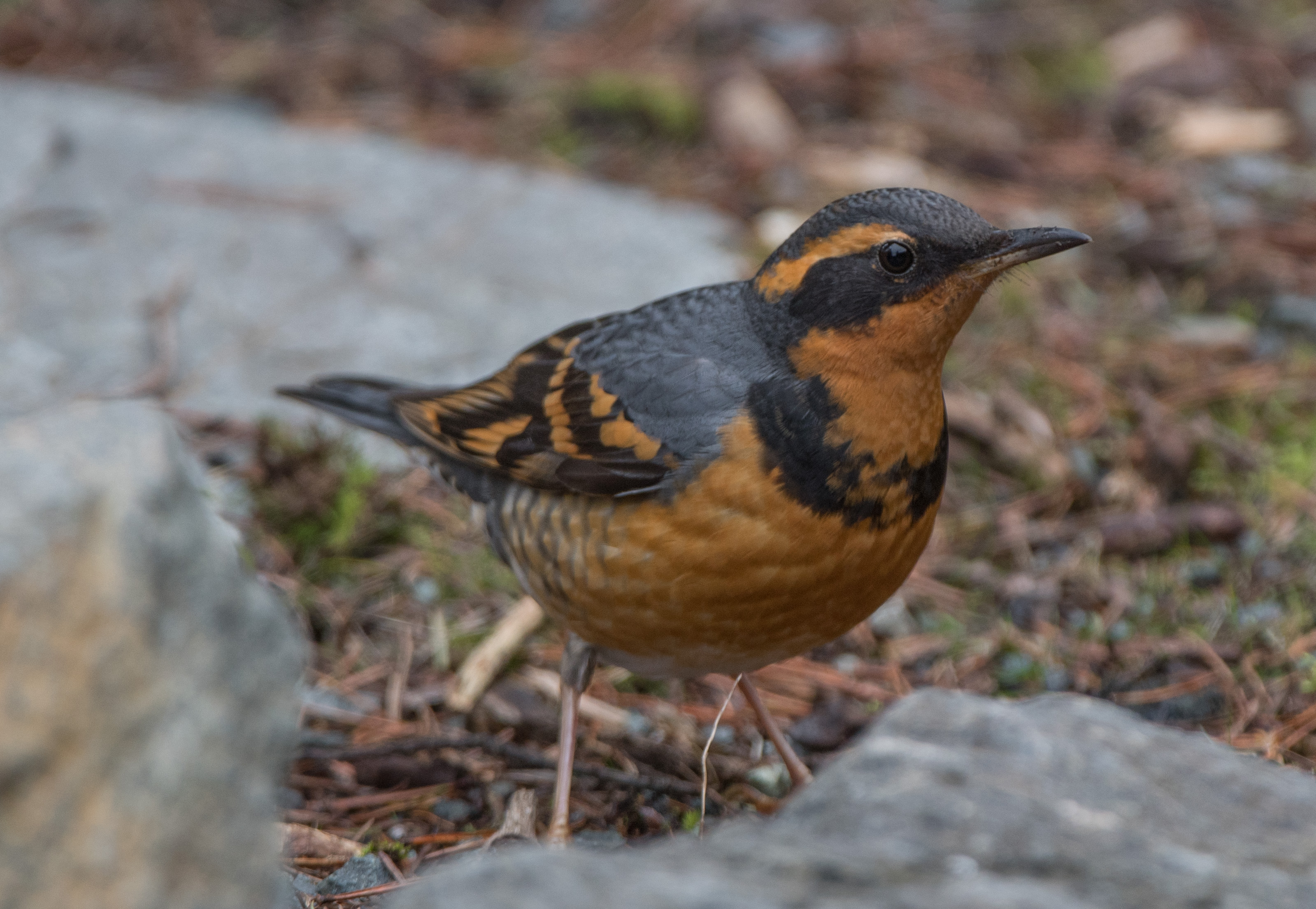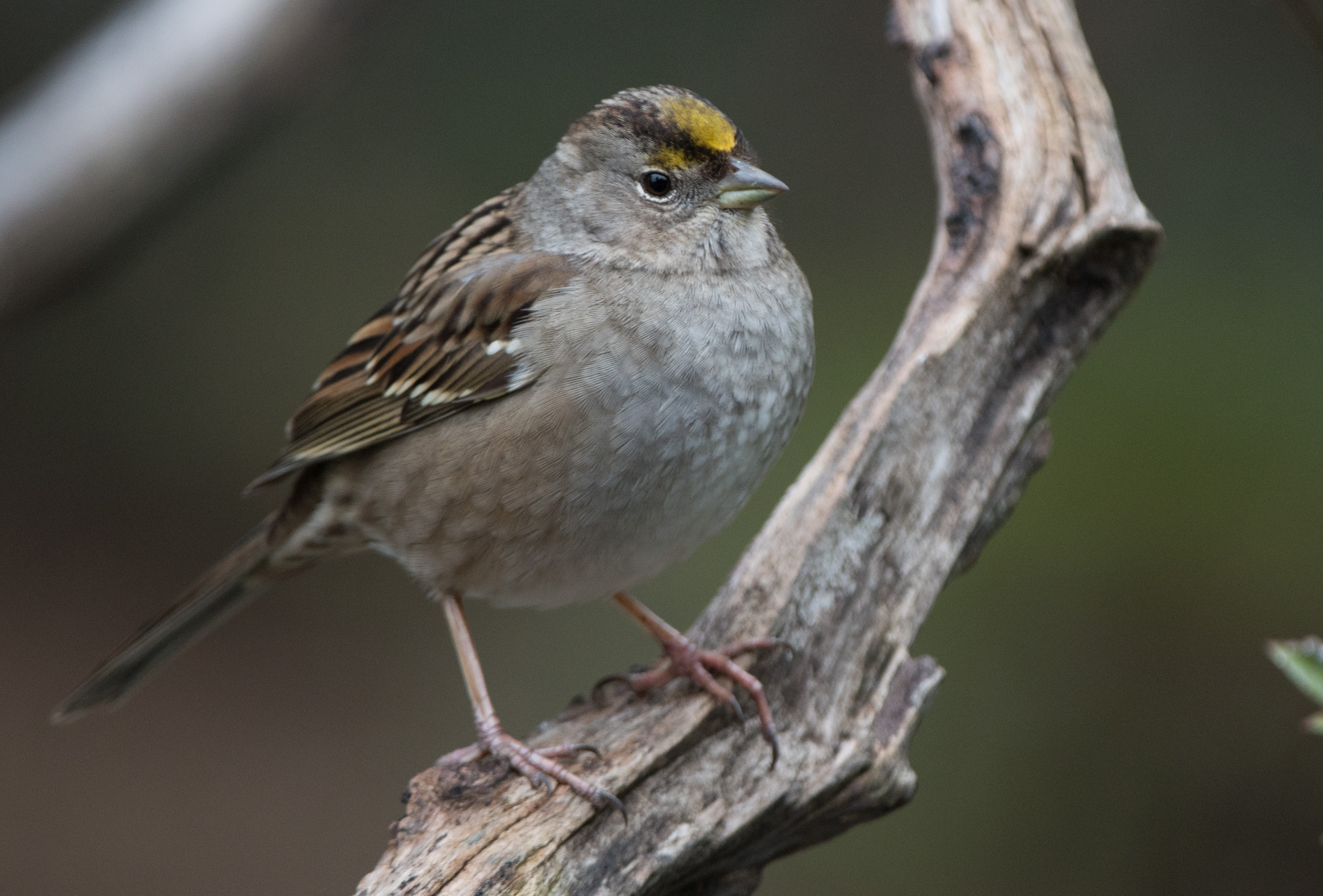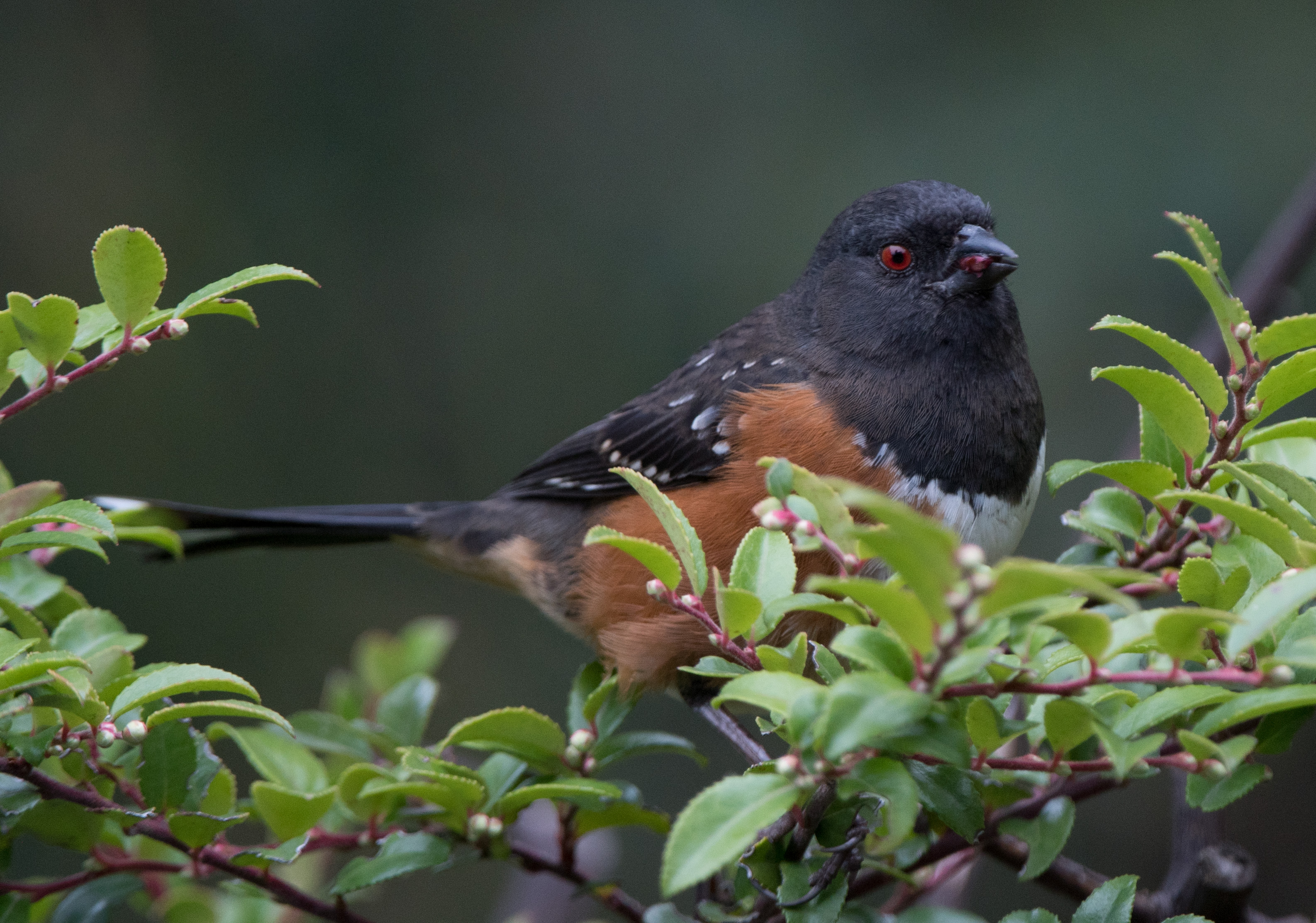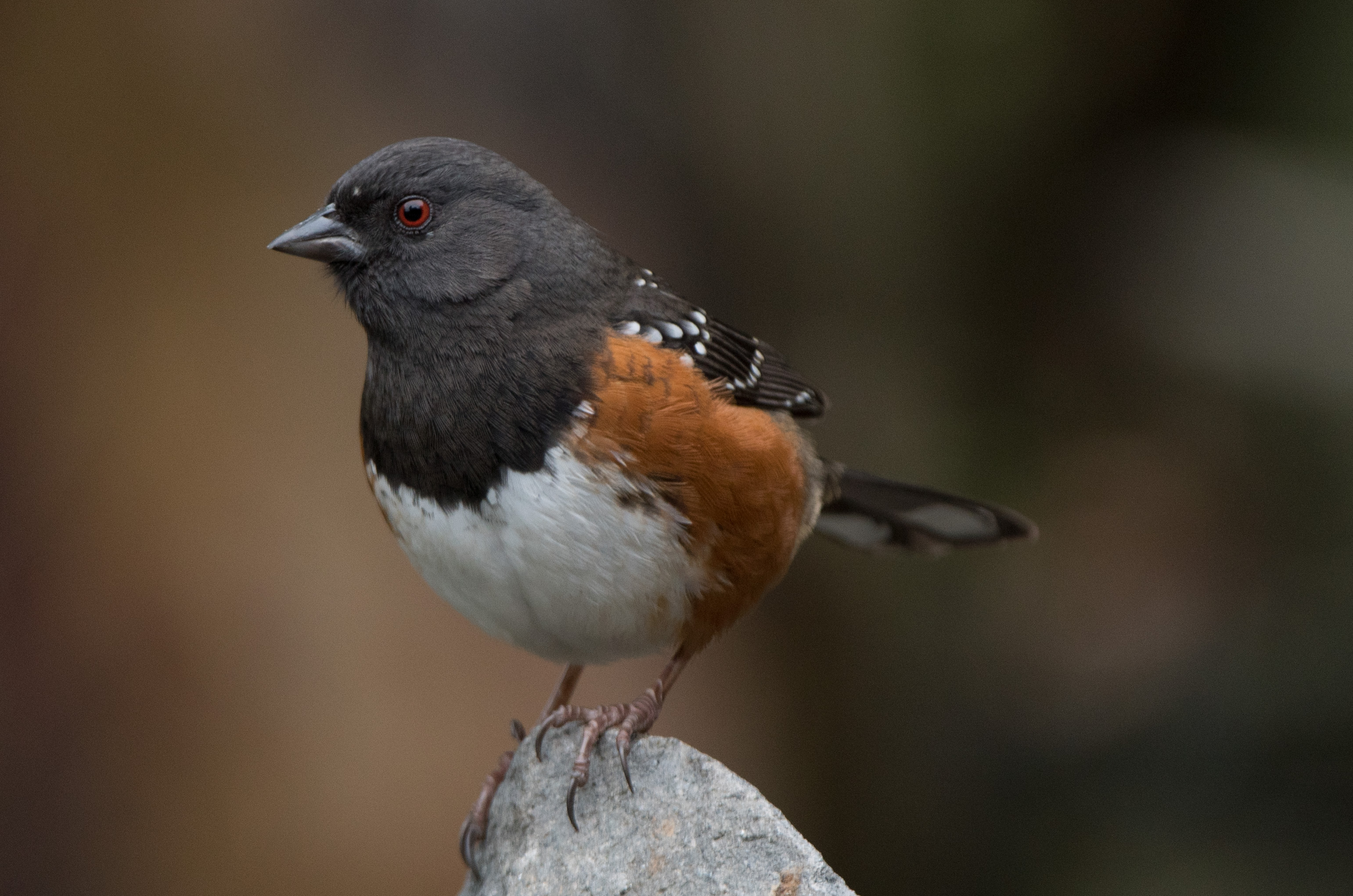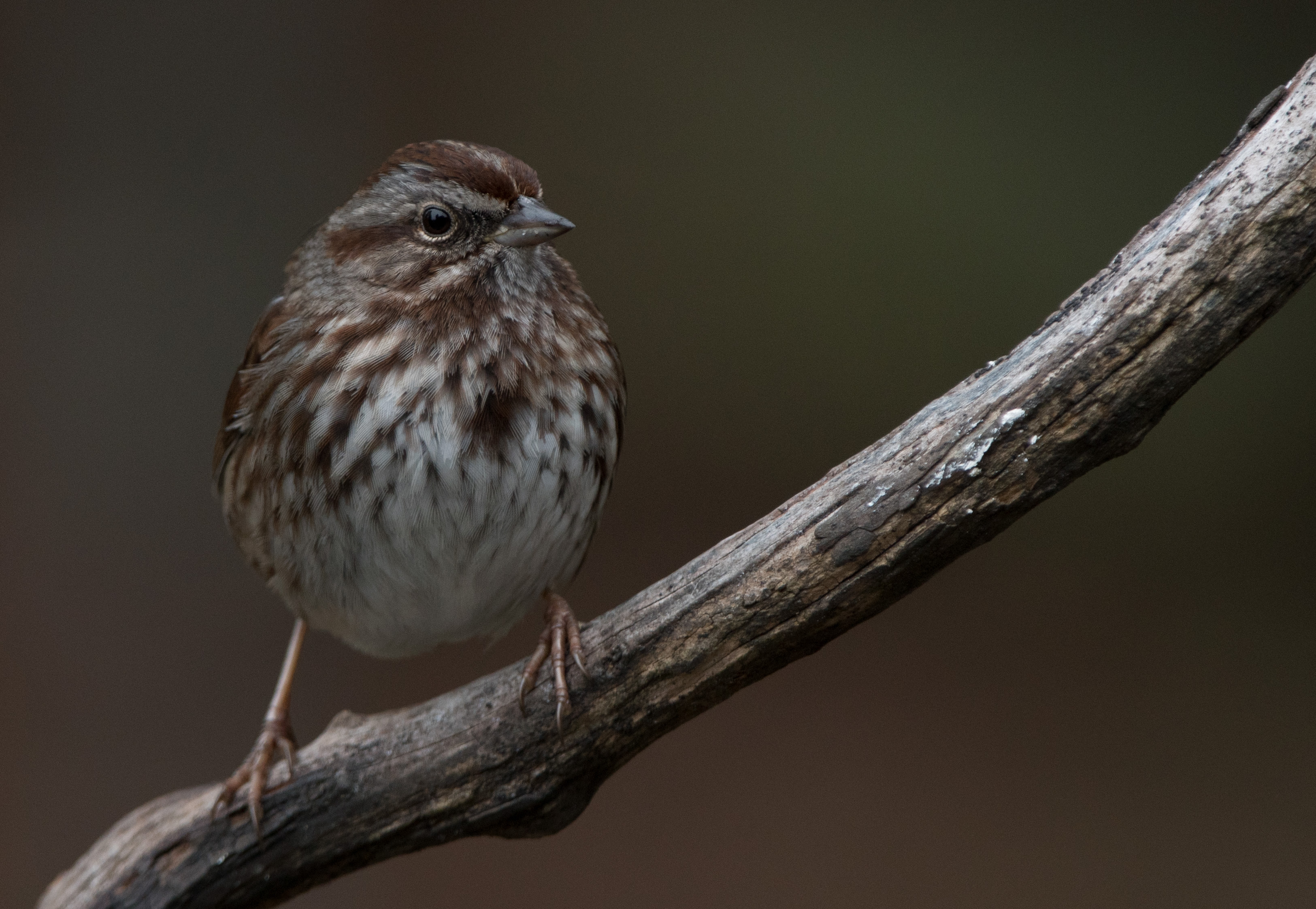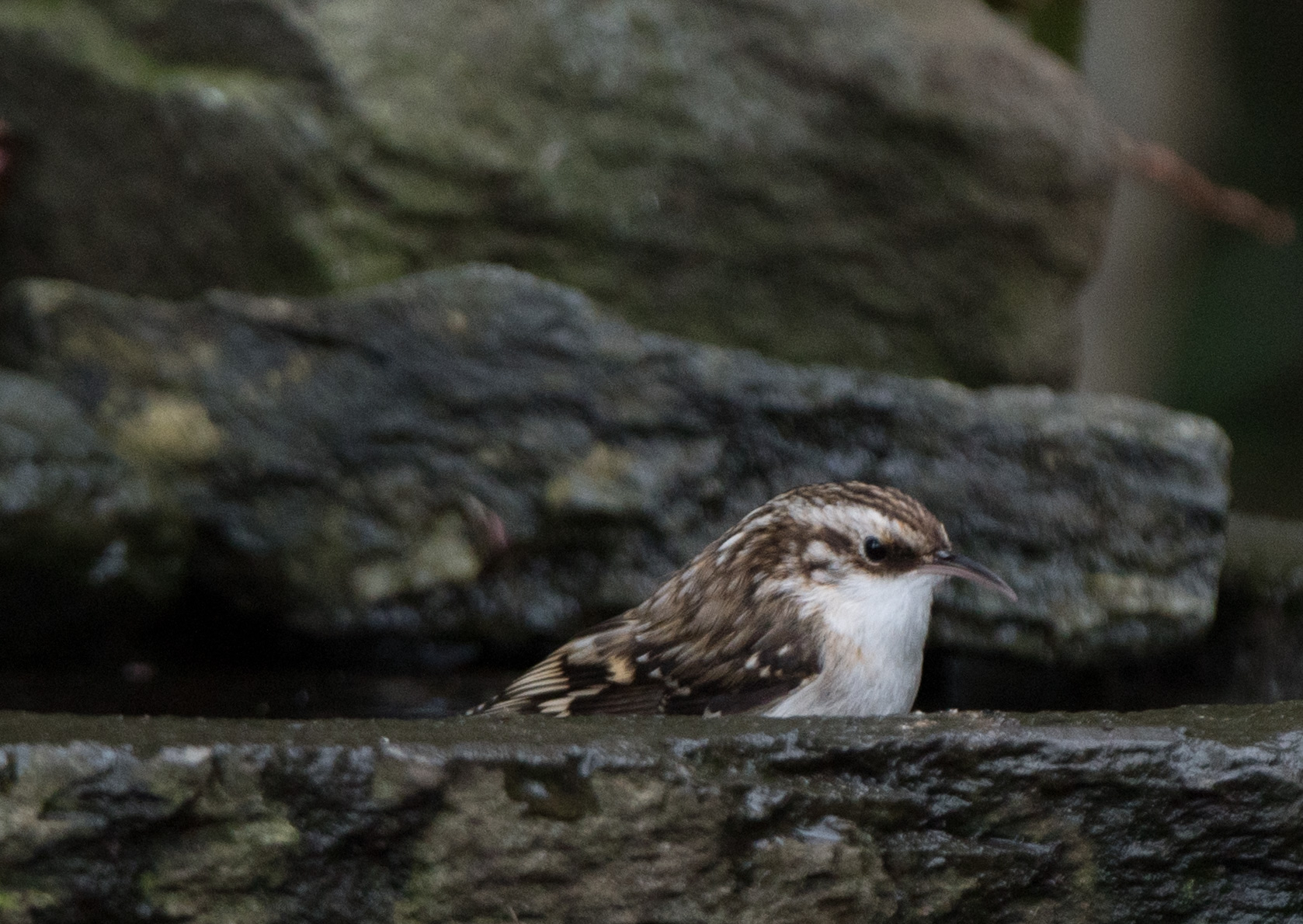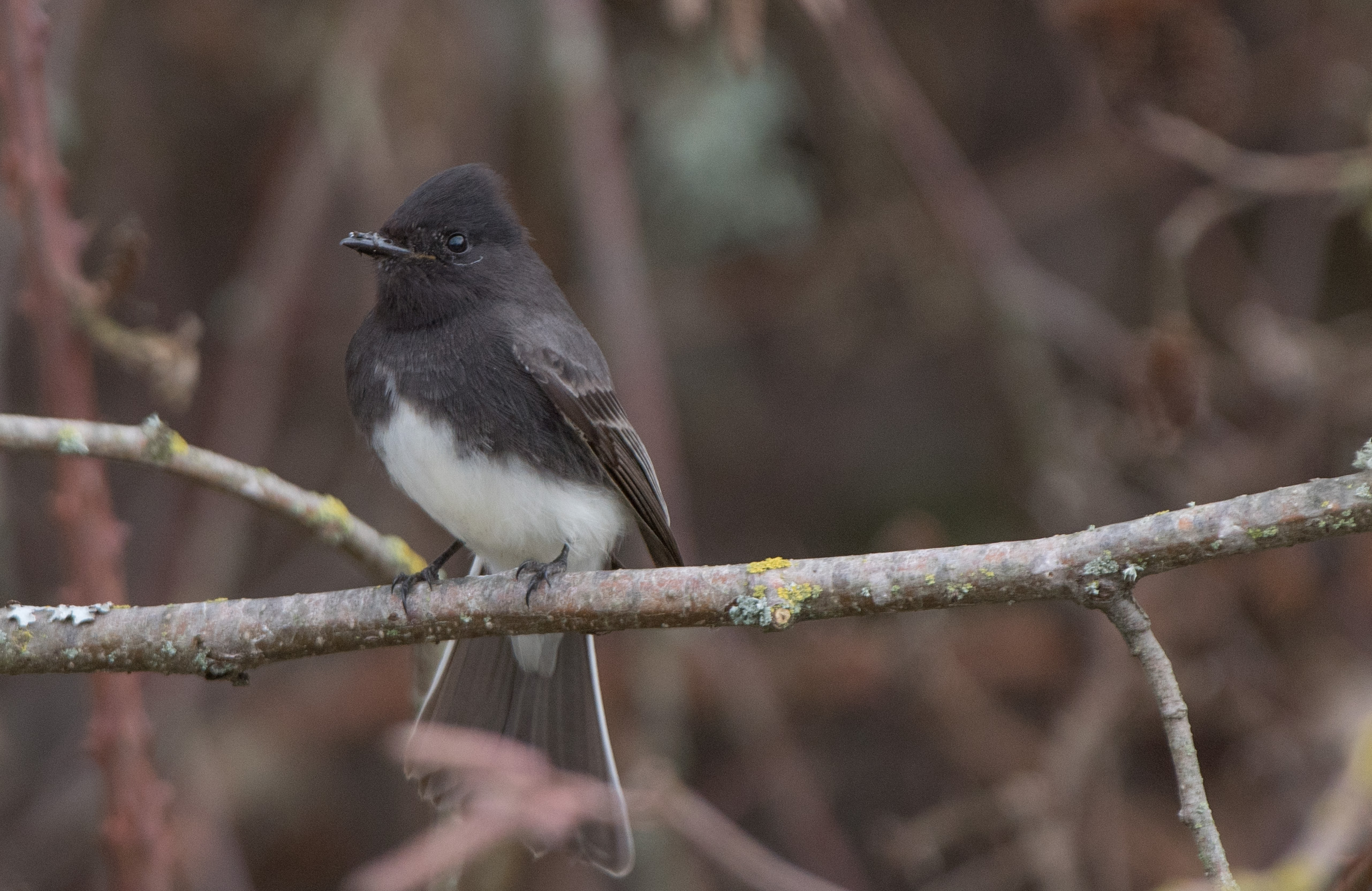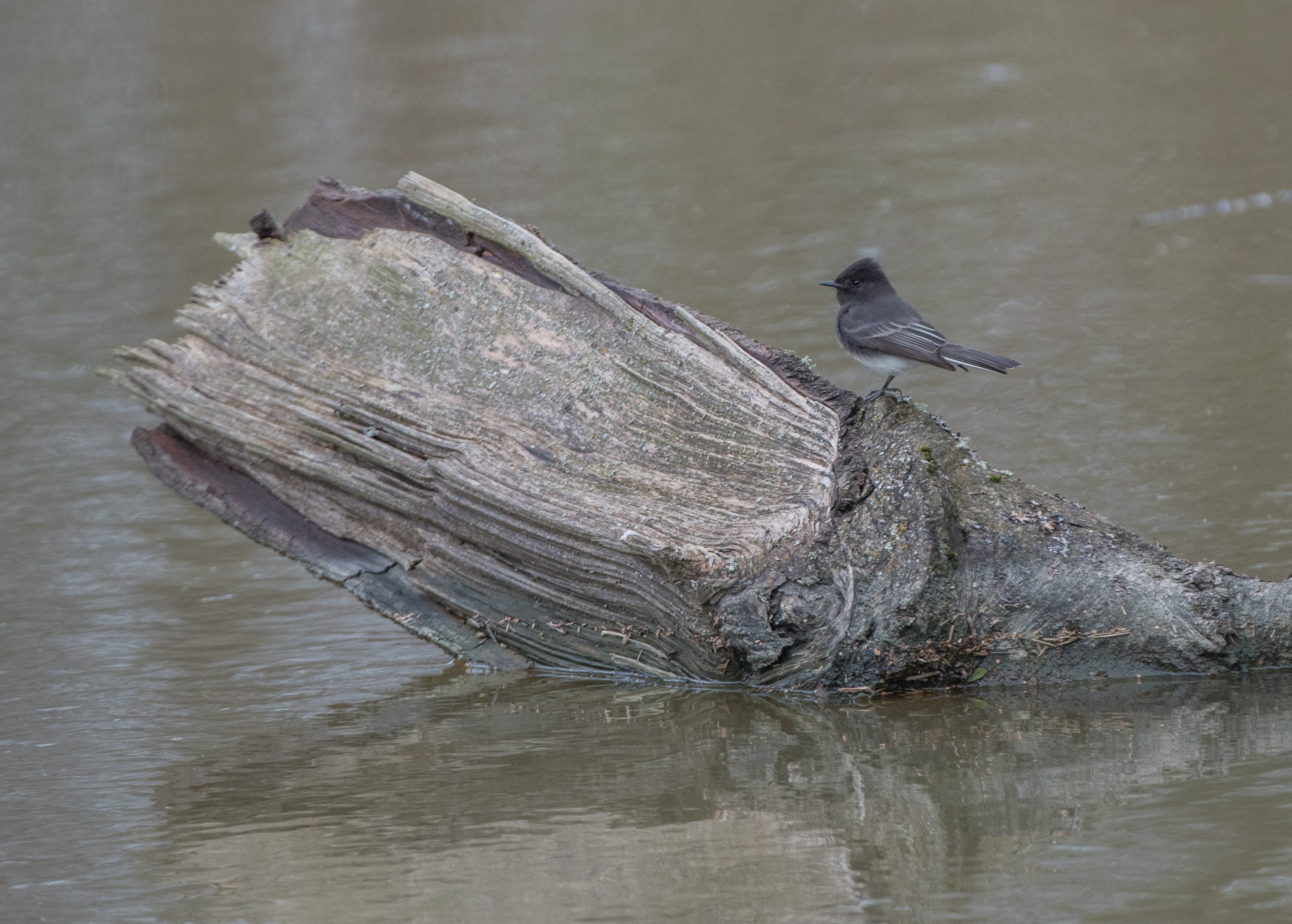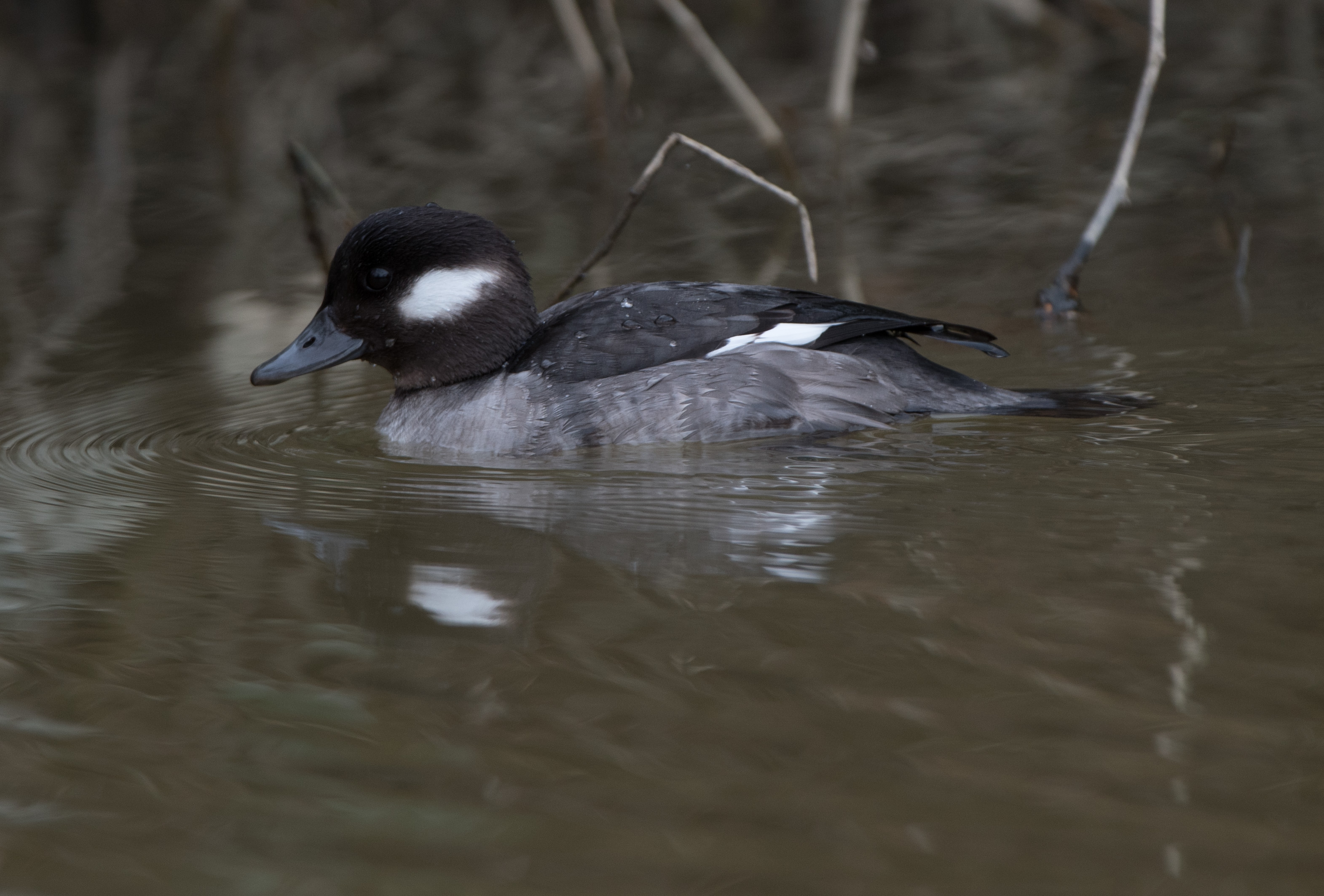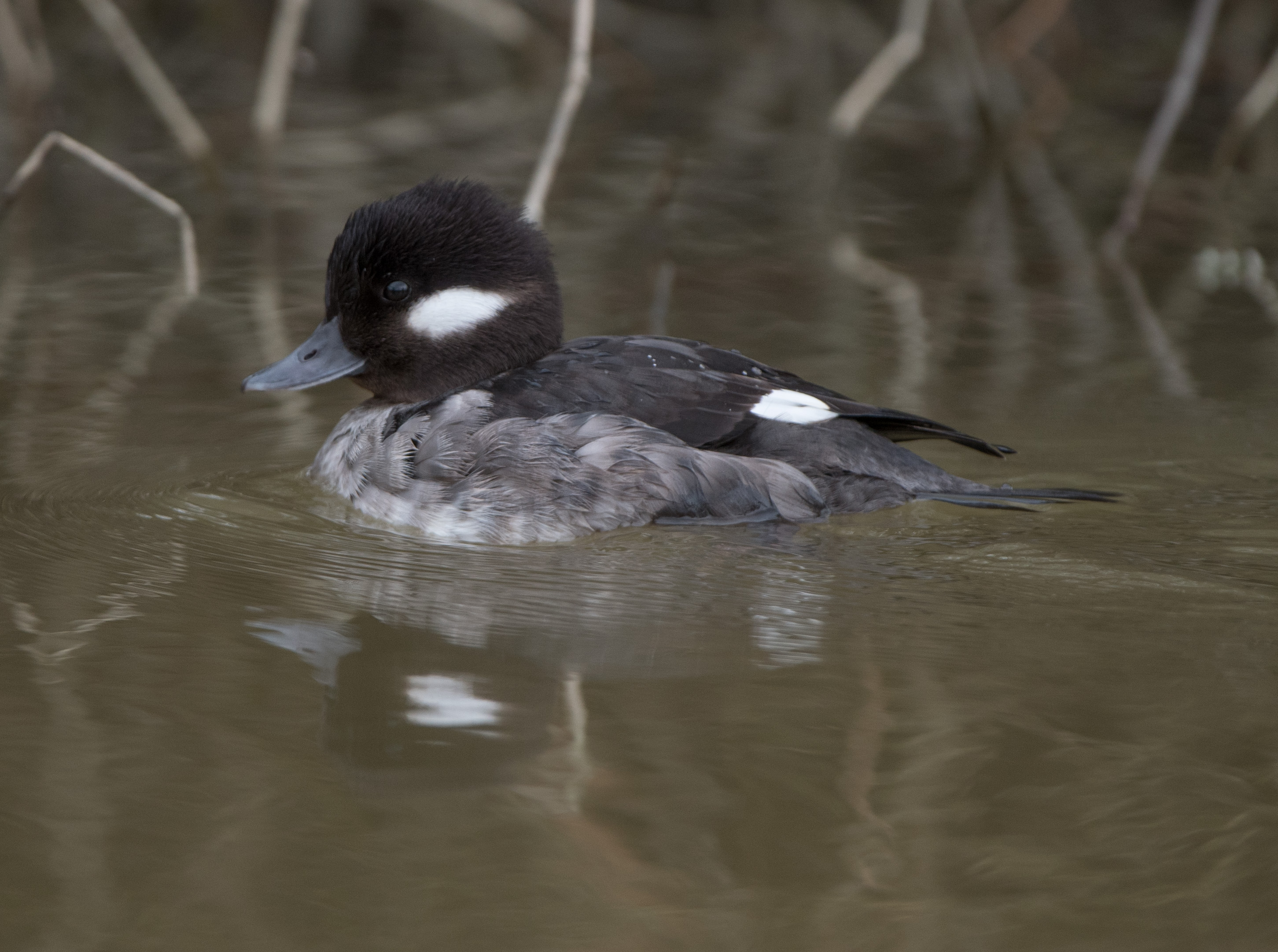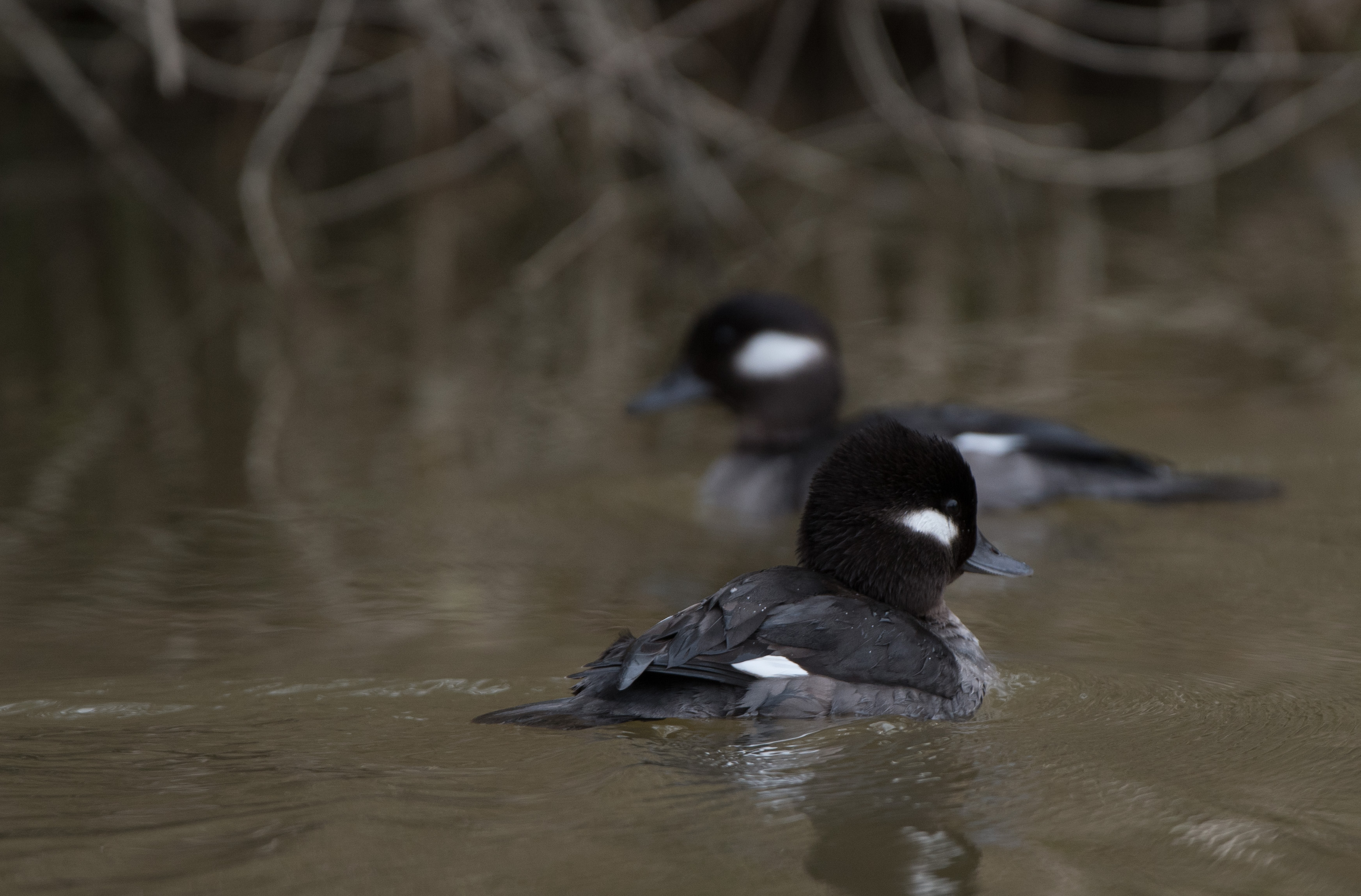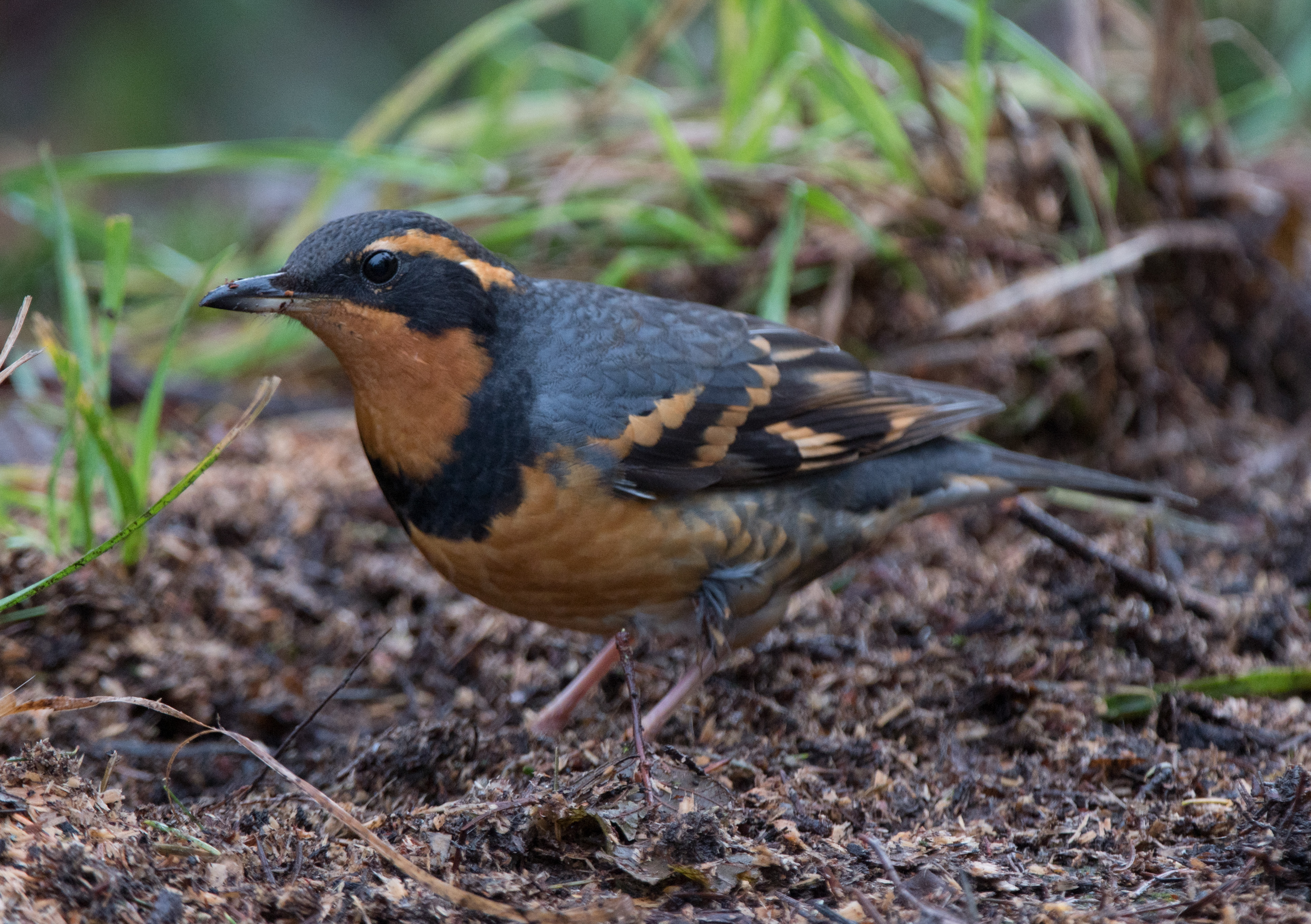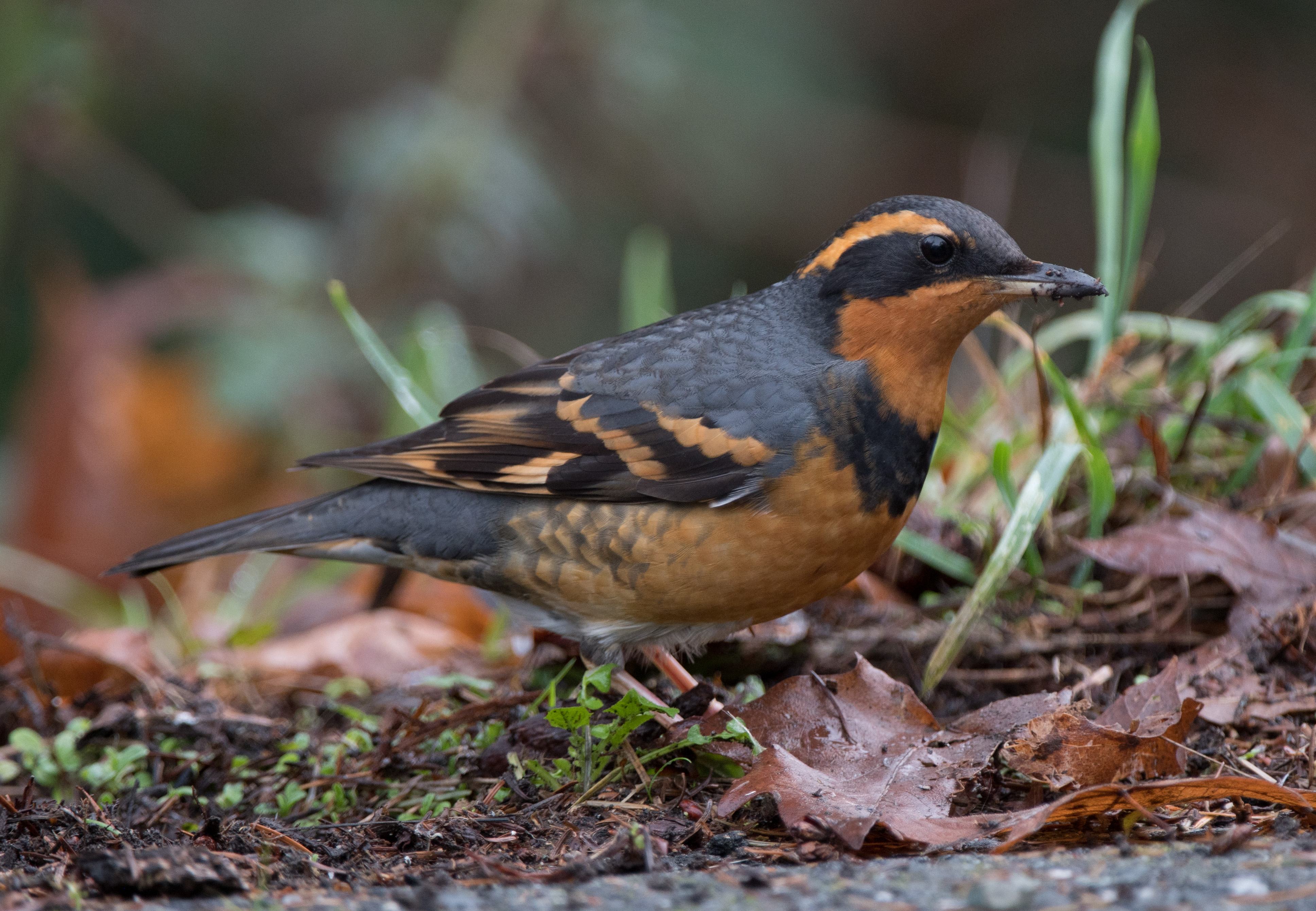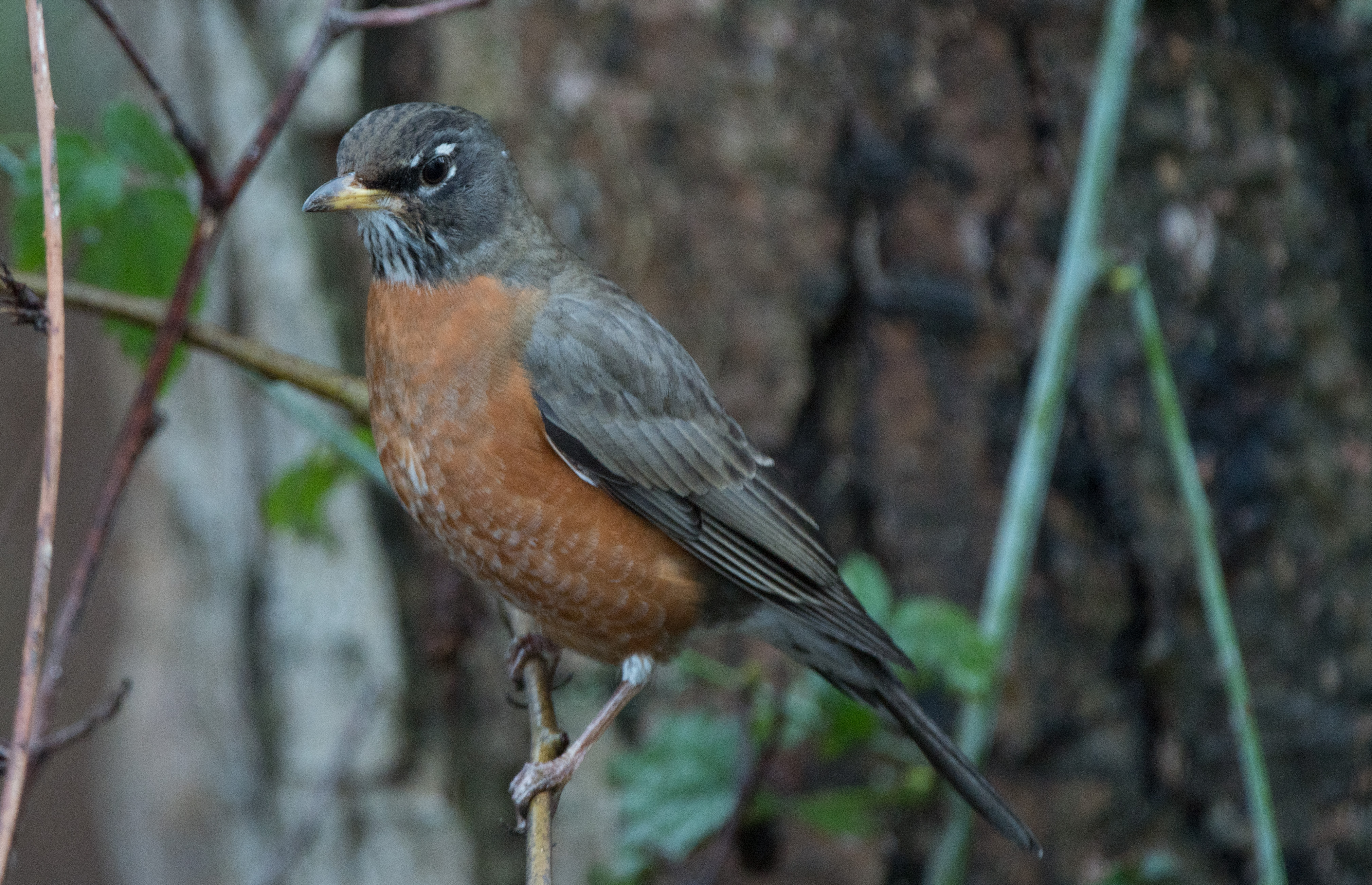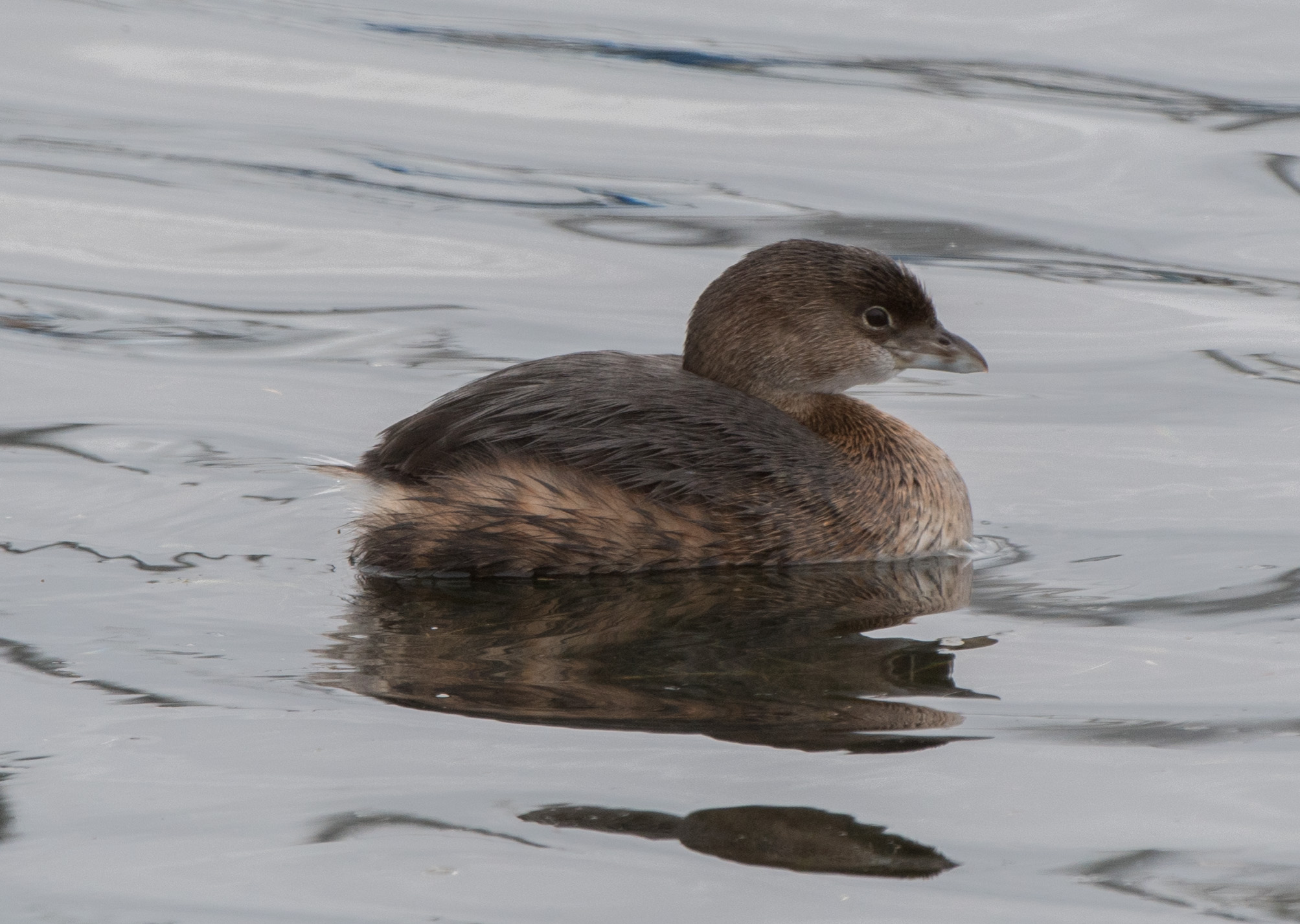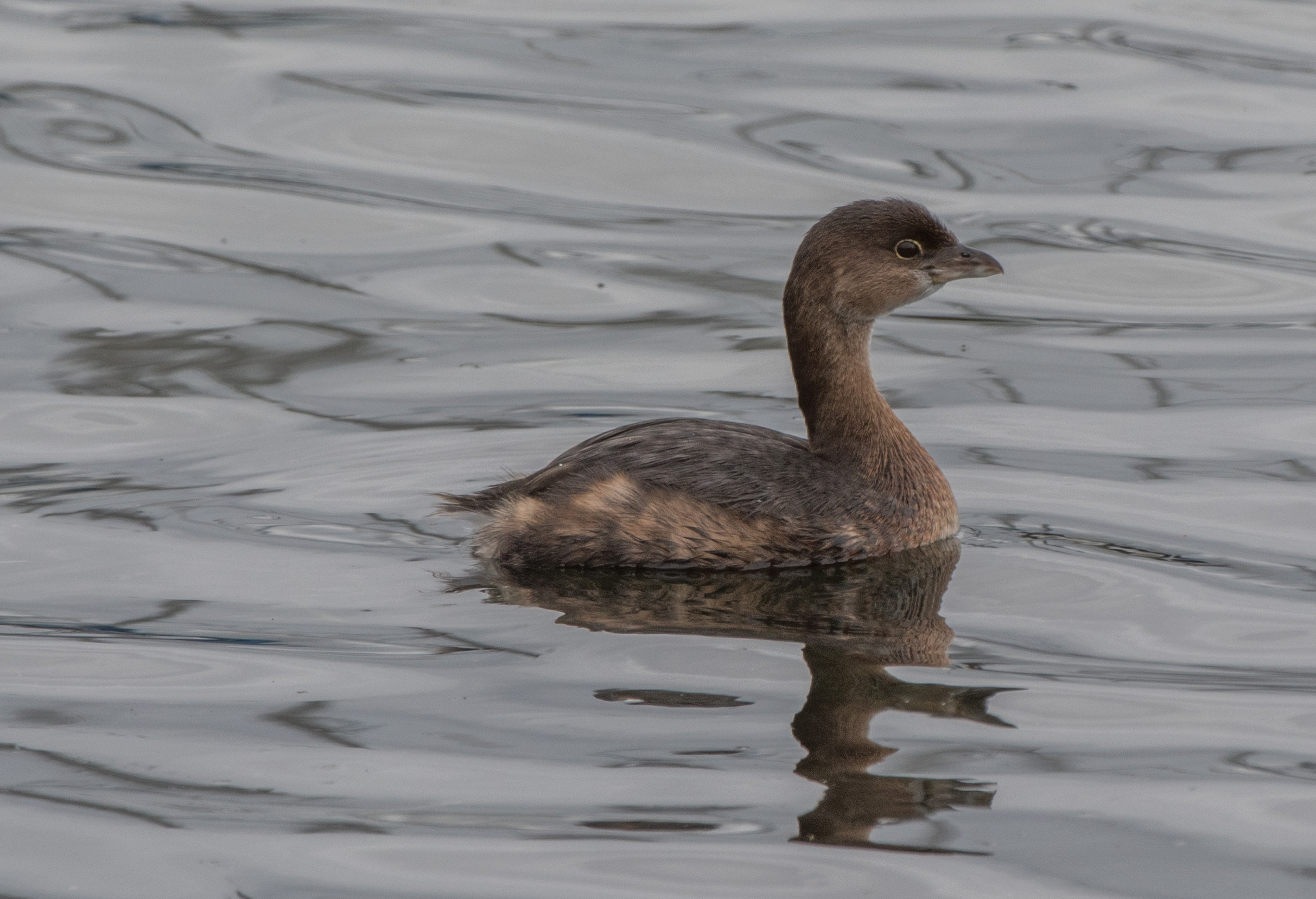In my most recent post (from early this, 1/20) morning I complained about the dearth of winter visitors. This afternoon my wife alerted me to the presence of a male Varied thrush in our watercourse. I grabbed my camera and tried a different strategy… sneaking out the front door where I was hidden by a wall and a large pot of bamboo. The technique worked and I was able to set up without the thrush seeing me.
I was careful, and lucky… the thrush puttered around the watercourse and yard for 10-15 minutes. I managed a LOT of photos, not wanting this opportunity to get away from me.
As soon as the thrush left the yard a Golden-crowned kinglet, a species that has been conspicuously absent from the yard this winter, flew into the watercourse but failed to present an opportunity for me to photograph it.
Since I had a good blind location and there were numerous birds in the yard, I remained in my location for awhile.
We had at least seven Golden-crowned sparrows in the yard…
There were at least three Spotted towhees in the yard, this one eating blossoms, buds or fruit off of an Evergreen huckleberry…
This Song sparrow took break from feeding in the yard to visit the watercourse…
A male Anna’s hummingbird took a break from guarding feeders for a brief bath in the watercourse. I briefly had an opportunity for a photo of it hovering above the watercourse but I wasn’t fast enough to take advantage of the situation.
Finally (by this time I was getting cold!) I noted a Brown creeper visiting our stone birdbath across the yard. This is a fairly rare visitor to our yard. In this case I was lucky in that I was in position with my camera ready when I saw it. It was driven off by another bird but not before I documented its visit.



